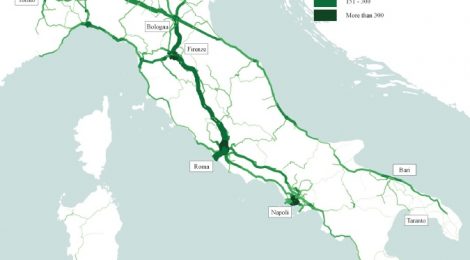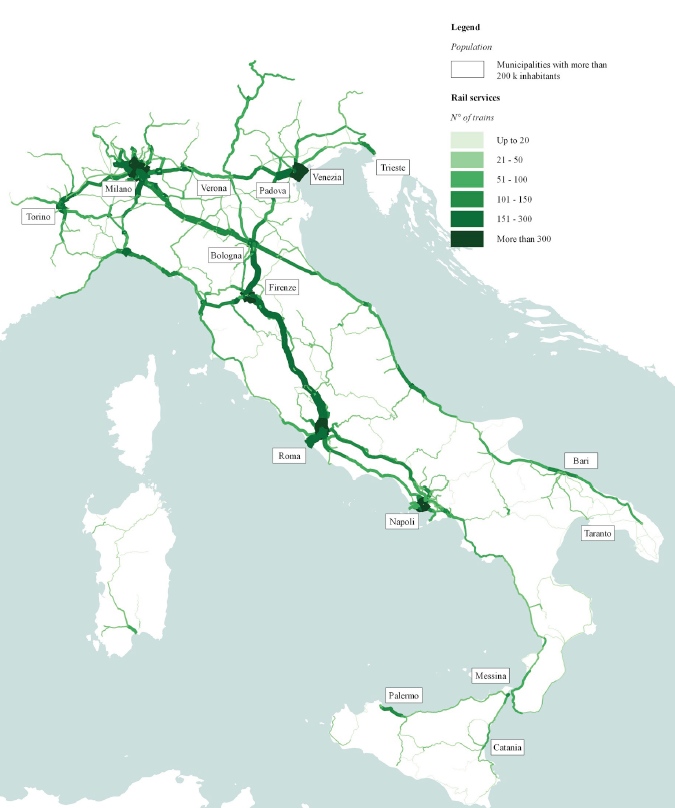
Journal paper: Evolving long-distance passenger services. Market concentration, fares and specialisation patterns in Italy (P. Beria, A. Bertolin)
In anteprima su Research in Transportation Economics un articolo sui trasporti di lunga percorrenza in Italia.
The article is based on the results of the research project QUAINT (SIR financing of the MIUR) analyzes the train services in comparison with bus services and carpooling in Italy. The three principal contents of the paper are:
- The measure of intramodal (train) and intermodal (train + bus) competition levels through the calculation of HHI. In addition to the level of competition between the two railway operators, the overlap between Long distance (LD) services, LD (with PSO) and regional services is also analyzed.
- The price levels (per km) of different modes and service levels is estimated along with a discussion on the effect of competition on the prices. The main inference is that Trenitalia (on the routes analyzed) does not seem to apply higher prices on monopolistic routes with respect to the ones in which Italo/NTV is also present. This is not because of the absence of competition but because the competitor is present on routes with more demand and more payment options in addition to the fact that the productivity of trasnport is higher on those routes (High Speed). Another interesting result is that bus/coach is not priced lower than the cheapest railway option for long distances indicating its effectiveness. Carpooling does not pose as a competition to coaches in the long distance segment (average higher level) thus, rendering it cheapest only for short distances.
- A comment on the evolution of the today’s extremely specialized market, in which every operator/mode and service must find itself in a defined category a) niche b) cost leader c) an operator with differentiated services.
The article is available for Journal subscribers through the following link:
https://www.sciencedirect.com/science/article/pii/S0739885917303487
If you are not subscribed, do not hesitate to contact us for a personal copy.





